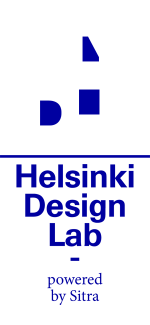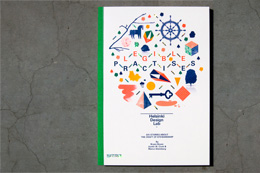After spending a day with the product design experts and generally brilliant people at BERG London I’ve decided to borrow their habit of weekly reporting on the progress of the work at hand. Twenty nine weeks ago we officially kicked off the Helsinki Design Lab 2010 project and it feels like we’re now finally coming to a point of clarity. The many great conversations Marco and I’ve had with various people in London this week helped confirm that. Things feel right.
At the Royal College of Art Rama Gheerawo and Maja Kecman, friends of HDL, were kind enough to take time out of their busy schedule preparing for a celebration of the Helen Hamlyn Centre’s 10th anniversary showing 100 projects. Great to see so much work in one small place.
Geoff Mulgan and his team at the Young Foundation shared their work on formalizing knowledge about social innovation and, more generally, the need for design to adjust itself to the opportunities at hand. Specifically, that a focus on being able to back up our claims with evidence will help designers gain traction in conversations with political decision makers and that a stronger focus on the stewardship of implementation is required to deliver strong successes. Music to my ears.
The Methods work – online in the new year – was a collaboration with NESTA, who were kind enough to host us for a discussion about their work in The Lab (popular term). Kerry McCarthy rightly pointed out that one of the difficulties in lab/pilot/prototype work is achieving successful transferability, of new knowledge and methods, to a different context. To make a gross generalization, this seems like a challenge for design at large. As a community, we’re good at perpetuating fundamental things like the studio/critique model of design education, but could generally be better about knowledge transfer within the community.
Over at the Royal Society for the encouragement of Arts, Manufactures and Commerce (RSA), Matthew Taylor and Emily Campbell put forward a provocative idea: design is a tool for self reliance. Helping people think like designers gives them additional tools to solve their own problems, and assisting institutions to better understand the value of design helps eliminate those problems in the first place. How can design contribute to people achieving the future they want?
Some of those ideas came up at the Design Council as well, where Marianne Guldbrandsen hosted me for a long conversation about many things, including how the Council has been devoting more attention to design as a tool for understanding through ethnography and field research. By influencing design policy, developing new skills and education capability within the UK design community, and sponsoring demonstration projects that make the case for the value of design, the Council is up to many interesting things.
Tom Loosemore of 4IP was kind enough to let Marco and I pick his brain on the challenges of funding socially beneficial projects from a venture capital perspective. 4IP’s investments in new media represent a really exciting expansion of the notion of media, public service, and business opportunity. Tom’s insistence that the challenge of running a business is a useful test for any good idea was a nice wake up call. At the end of the day, everything we do should generate value in some way, right?
The question of value continued as a thread in my discussion with Inderpaul Johar of Architecture00 too. Inderpaul is the rare sort who can speak fluently about architecture and finance and policy in an incredibly thoughtful and articulate way. One big question that came out of our chat was the nature of design education today: what’s missing? Indy has a lot of ideas.
As an architect myself, it’s nice to see the architecture scene in London active in this discussion. Sarah Ichioka, who has been running the Architecture Foundation for about a year now, is fostering a larger discussion about reshaping spatial practice. I was disappointed to have missed Paul Nakazawa’s lecture at the AF, but not surprised in the slightest that he’s part of the conversation here. Paul’s experience consulting architecture offices around the world about the business challenges of running their practices, about the changing role of the architect, and about the intricacies of practice in an international context is a true resource.
At the end of this busy week, weary from waking up a little too early to be on a conference call with our legal team, I’m taking a bit of time to relax with a coffee at the stylish Modern Pantry in St. John’s Square. My brain will be crunching through these many great conversations for weeks to come but for now I’m heading back to Helsinki. Till next time, London!


